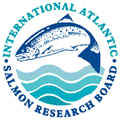SALSEA-North America
SALSEA-North America
SALSEA-North America and SALSEA-MERGE were developed around common themes to further the understanding of factors affecting marine survival of Atlantic salmon stocks on both sides of the North Atlantic. Under SALSEA-North America, marine surveys took place in August 2008 and September 2009.
Several research activities described in SALSEA North America continued beyond the two years of marine surveys. Many activities in the index rivers program have taken place over the past several decades and continue. Analysis of historical and ongoing data continues as new techniques and hypotheses are developed for addressing the questions of population dynamics and ecology of Atlantic salmon.
Objectives
Questions to be addressed using data from the marine research survey include:
- where are the early marine phase nursery areas of Atlantic salmon?
- are stocks from the greater than 600 rivers in eastern Canada mixed at sea?
- what are the other components of the pelagic community occupied by Atlantic salmon?
- what prey are they consuming relative to what is available?
- are they being consumed by other fish predators within the pelagic zone?
- what has been their marine growth profile and how does it differ from the profile of subsequent survivors the following year?
- what is their disease profile compared to profiles of outgoing smolts?
- what is the parasite community and does it differ in smolts going to sea from adults returning?
- are maturing (grilse) and non-maturing (multi-sea-winter) salmon mixed at sea or have they segregated and use different parts of the ocean?
- are there aquaculture escapees in the same areas as the wild fish?
